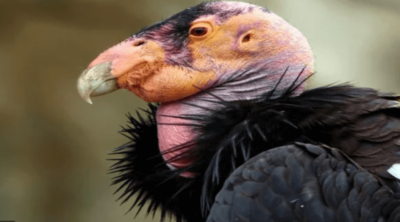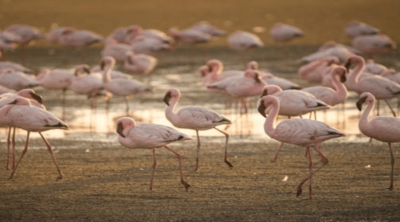
Like a precious gem, the nests of hummingbirds are one of the marvels of nature. They appear like a tiny bump if viewed from the ground, and are covered by a canopy of leaves. We draw you into their little world of creativity, where you get to know about their architectural creations, which includes everything from constructing the nest until maturing of the birds.
Small size, but great wonders!
Only the female hummingbird works in building the nest and raising her chicks. The nests are built of web, which gives the elasticity to hold the chicks till they grow up.
Hummingbirds have great minds, which help them make such pretty nests. They are one of the smallest birds, so ever wondered how small their eggs or babies would be? Well, this article informs you about that.
We always picture those attractive colors when we think of the hummingbird, but those are the males, while females are duller in color. But during the period of nesting, it is the females who are the real heroes. The males do not chip in for any contribution from their end, and hence, the female does everything right from building the nests to raising her babies.
The time period between building the nest till the time that the hatchlings leave home takes about 5 – 8 weeks. However, for every enthusiastic bird watcher, it is an experience in itself to observe the nests built by them keenly.
Nesting
Mother hummingbird starting to build the nest
Choosing a Location for the Nest
Hummingbirds choose locations where they’ll get protection from the sun, wind, and predators. Their nests are so tiny and delicate that an appropriate place has to be found. The most common places are forked branches of trees and shrubs, but they can build nests on anything and everything. The first step is to find that location. In this search, the female goes to a potential place many times to check if it is safe for her babies. She also checks the stability of the branch. Females normally find a place that is 3 – 60 feet above the ground. Every species has a different style of nesting though. In this house hunting process, the female also checks for the availability of food sources nearby.
Making of the Nest
Their nests are cup-shaped. The female spends many hours in a week to build her nest. The nesting materials commonly used are spider silk cotton fibers, plant downs, feathers, and moss to camouflage. The female weaves all the fibers and twigs, using spider silk, and then it sees to it that it is attached to the branch also. The inward edge of the cup protects the eggs from damage in rough weather. The females are smart architects to find a way for everything. The tiny nest will hold the eggs, but when the chicks are born, they’ll need more space. Spider silk is used for that purpose because it stretches as the chicks grow up, making enough space for them. Spider silk is one amazing material; it is so thin yet so strong, and also sticky and elastic. The female fills the cup with plant down, and sticks the moss and lichens on the outer side so that it camouflages perfectly.
Facts about the Nesting Process
Mother bird weaving the nest
The nest of a hummingbird is only about 1 – 2 inches in diameter.
The mother works for 4 – 5 hours each day to build the nest. She has to make many many trips (almost 34 in an hour!) for collecting the nesting material. The entire building of the nest takes 5 – 7 days.
Hummingbirds don’t live in artificial bird houses or cavities.
Hummingbirds are known to steal nesting material from the nests of other hummingbirds.
A male, as mentioned above, doesn’t help in anything, but even if it comes near the nest, the female will chase him away because she feels that the male’s colorful colors may attract predators.
Some hummingbirds, like the hermit hummingbird, build nests that hang from branches or leaves.
The Eggs
Hummingbird eggs in the nest
Mother incubating the eggs
Hummingbird eggs are very small, about the size of a navy bean, and are white in color.
A female hummingbird lays 1 – 2 eggs at a time. If a nest has more eggs, then it may mean that two females have laid eggs, because otherwise the female will not be able to feed all the chicks.
The female lays one egg and then the other after 1 – 2 days, but both of them hatch at the same time, because the mother doesn’t incubate the first egg until she lays the second one.
The mother incubates the eggs for the whole night and day (in between breaks for feeding herself) for 15 – 18 days. It may take longer if the weather is very cold.
Some females cannot finish the nest, so they lay the eggs in a half-done nest and complete as they’re incubating the eggs.
Hatchlings
A newborn baby
Mother feeding the chick
When the chicks are born, they are almost naked (no feathers), dark in color, and blind. A small yellow beak is seen, and their eyes are closed.
The mother takes as much as she can and then comes back and regurgitates in the baby’s throat. The chicks have to be fed almost every 20 minutes because of their fast metabolism, so it takes a lot of food to feed them.
If the weather is very cold, the mother may sit on the chicks for giving them warmth. The chicks don’t have much feathers; hence, the mother broods them until they can manage the temperature themselves.
The nests are always kept clean. The egg shells are thrown out after birth, and the droppings are eaten or thrown out by the mother. The chicks do not learn anything while they stay in the nest.
The juvenile is ready to fly away
The juveniles leave their nest after 4 weeks. They cannot feed on their own, so the mother may feed them for another week, and in that week, the fledglings learn how to feed on nectar and other things.
Hummingbirds can brood 2 times in a season. Some are also seen building a new nest before the first hatchlings fly away.









